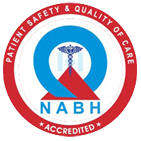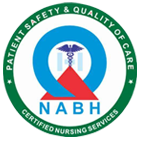FOLLOW THE MISSION HOSPITAL




Asbestos is the name given to a group of natural mineral fibers that are known for their strength and for their fire and chemical–resistant properties. Because of these qualities, asbestos has been used as a strengthening agent in cement and plastics, as well as a material for insulation, fireproofing, and sound absorption in numerous manufacturing and building and construction industries.
Asbestos fiber colors come in blue, brown, gray, green, and white. In the United States, the white-colored asbestos fibers, called chrysotile, have been the most commonly used. Crocidolite, amosite, or anthophyllite are the names of three other types of asbestos materials used for commercial purposes.
More than 5,000 products contain or have contained asbestos. Some of these products include:
When asbestos-containing materials are disturbed or during improper removal, the asbestos fiber can easily break down into tiny particles too small to be seen and become airborne. Once airborne, the particles can be inhaled and can remain and accumulate in the lungs.
Exposure to asbestos may increase the risk of developing any of the following diseases and conditions:
Due to these health risks, in the late 1970s, the US Consumer Product Safety Commission banned the use of asbestos in several products. In 1989, the US Environmental Protection Agency banned all new uses of asbestos. However, many products and particularly buildings that were built before the late 1970s contain asbestos.
Most people who have asbestos-related illnesses have had regular exposure to it, typically through jobs where they’ve worked directly with the material. Occupations in which workers have received such exposure include the ship building trades, railway construction, asbestos mining and milling, construction and building trades (specifically insulation workers, plumbers, pipefitters, electricians, carpenters, boilermakers, welders and cutters), chemical manufacturing, flooring manufacturing, plastic and rubber manufacturing, the auto industry (specifically brake repair), firefighters, fabric mills workers, and building demolition workers.
It is well known that the longer a person has been exposed to asbestos as well as the greater the intensity of the exposure, the greater the chance of developing an asbestos-related disease. However, asbestos-related diseases also have been diagnosed in individuals with only brief exposures. People who develop asbestos-related diseases usually show no signs of illness for a long time – for as long as 10 to 40 years – after their first exposure.
Not all individuals who have been exposed to asbestos develop diseases related to their exposure. The risk varies with the extent of exposure, length of exposure, and type of industry in which the exposure took place. For example, industries in which the asbestos is bonded into finished products such as walls and tiles pose little health risk. Industries in which asbestos is released into the air, such as from sawing or drilling activities, pose a greater risk.
Smoking markedly increases the risk of lung cancer in individuals with asbestos exposure. Asbestos exposure in the absence of a smoking history is associated with a 6-fold increase in risk for developing lung cancer. Cigarette smoking without a history of asbestos exposure is associated with an 11-fold increase in risk. The relative risk for cigarette smokers with a history of asbestos, however, is much higher than either exposure alone, approaching a 60-fold increase in risk.
Although smoking does not appear to increase the risk of mesothelioma, individuals exposed to asbestos on the job or at any time during their life should not smoke.
This type of “second-hand†exposure is called paraoccupational exposure. It occurs when asbestos particles are brought into the home on the shoes, clothing, skin, and hair of the exposed individual. There is some evidence that family members of individuals heavily exposed to asbestos face an increased risk of developing mesothelioma.
However, to decrease these so-called "second-hand" exposures, most industries that use asbestos-containing products have the workers change clothing upon arrival and departure from work. Showers are also available for workers to cleanse any remaining particles from their hair and skin. The contaminated clothing is handled and laundered by personnel who wear protective clothing and receive training to prevent exposure.
As noted earlier, it can take many years to several decades after exposure for an asbestos-related disease to develop. If any of the following symptoms do develop, make an appointment to see your doctor as soon as possible:
First, your doctor will ask you about any symptoms you might be experiencing as well as ask questions about your occupation and job-related exposure to asbestos. Next, your doctor will conduct a thorough physical exam, including lung function tests and a chest X-ray to look for any changes in the lung function and structure resulting from asbestos exposure. The presence of asbestos can also be measured in urine, feces, mucus, or material rinsed out of the lungs. Depending on the findings of the initial evaluation, further testing to take a closer look at the lungs may be recommended. These tests may include CT scans (a form of X-ray), bronchoscopy (passing a small tube down the windpipe and into the airways of the lungs), and possibly a lung biopsy (a small tissue sample).
Asbestos fibers are not harmful unless released into the air. Fortunately, the asbestos used in building materials and other products on the market today is encased in or bonded into the products, which helps prevent the fibers from being released into the air. Therefore little to no risk is posed from the installation of asbestos-based products and materials. The only general precaution would be to avoid sanding, tearing, or other actions that might damage or crumble the material and release the fibers into the air.
It’s usually best to leave asbestos materials that are already in your home AND that are in good condition alone. Do not touch or otherwise disturb the material. Inspect it from time to time to look for signs of damage or deterioration. There is no risk involved as long as the material is neither crumbly nor damaged.
If you do see signs of damage or deterioration, have the material sampled and analyzed by a qualified professional. If the sampled material does turn out to be asbestos AND it is more than slightly damaged, the asbestos material will need to be either removed or repaired. There are two methods of repair, but the goal of each is the same – to prevent the airborne release of asbestos fibers. One method of repair simply involves covering the material with a protective wrap. A second method, called sealing, coats the fibers with a substance so that the fibers bind together and have less of a chance of being released into the air. Repair is usually less expensive than removal procedures.
Regardless of whether the job is to test, repair, or remove asbestos, the Environmental Protection Agency recommends that an asbestos professional be hired to do the work. Improper handling of asbestos material can create more of a hazard than leaving the material undisturbed.
Here are some useful suggestions:

A Unit Of Durgapur Medical Centre Pvt. Ltd.